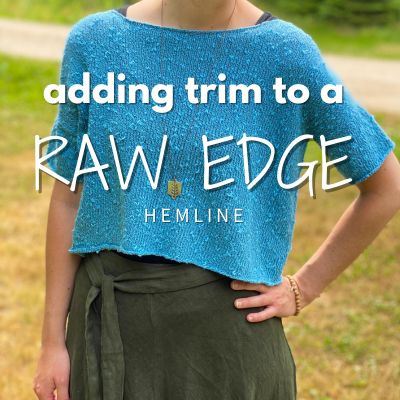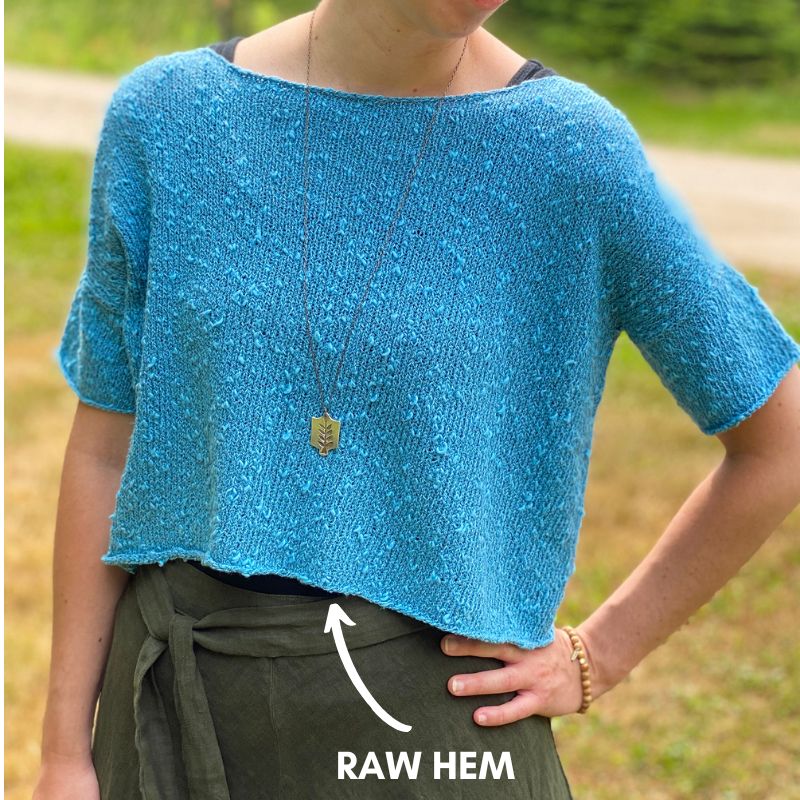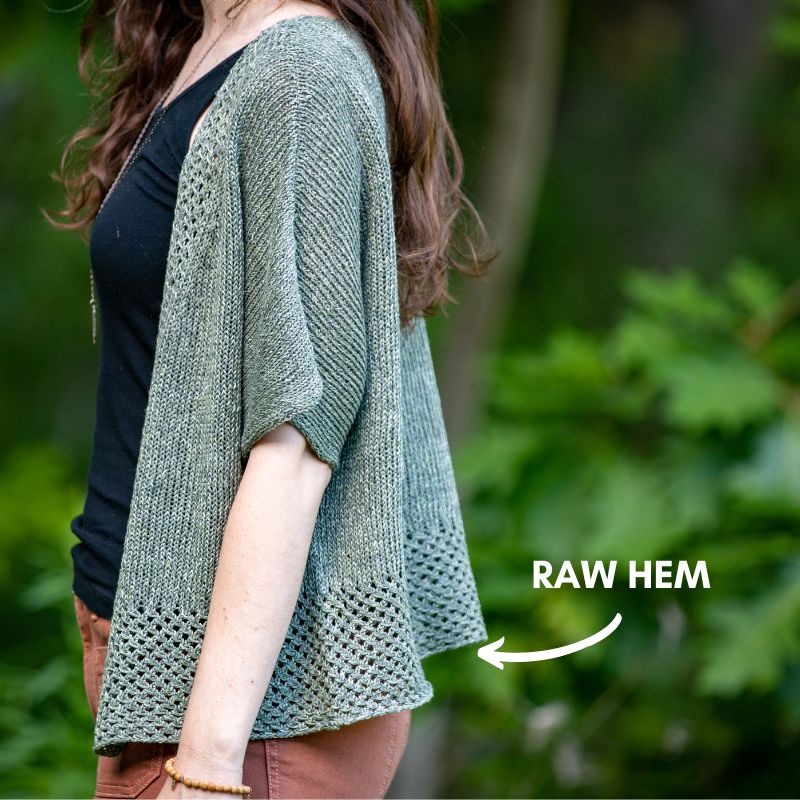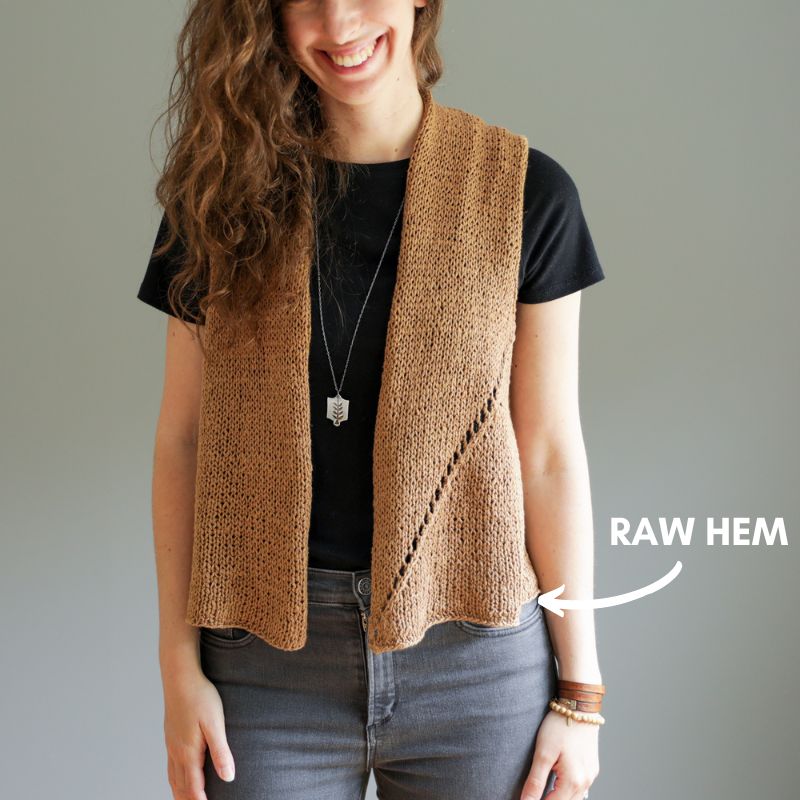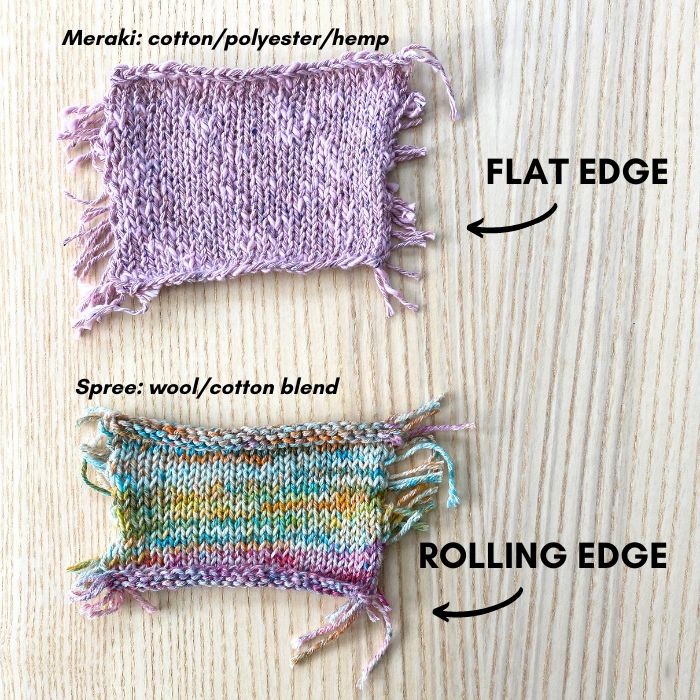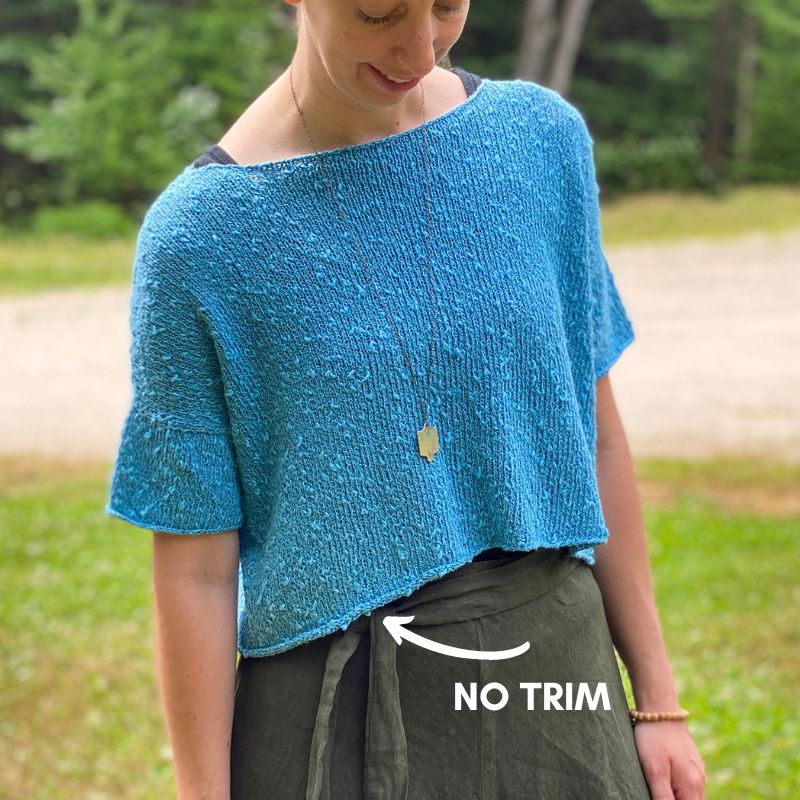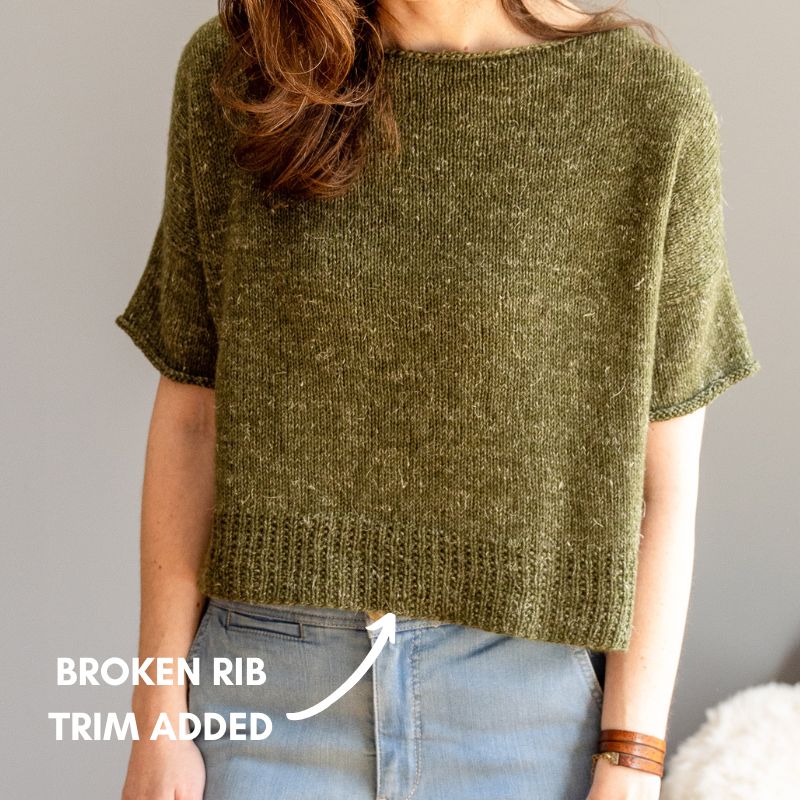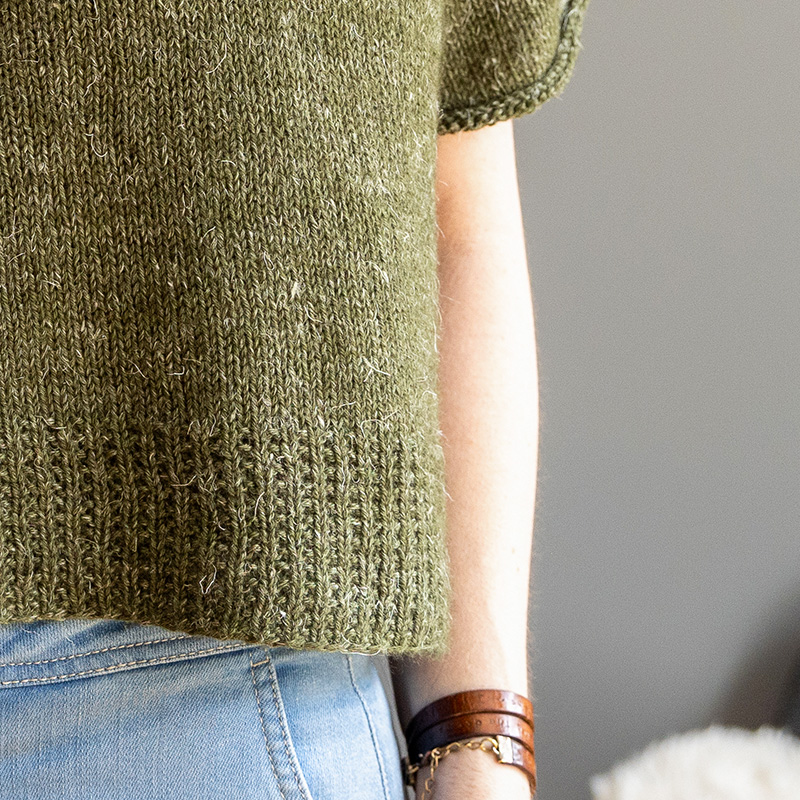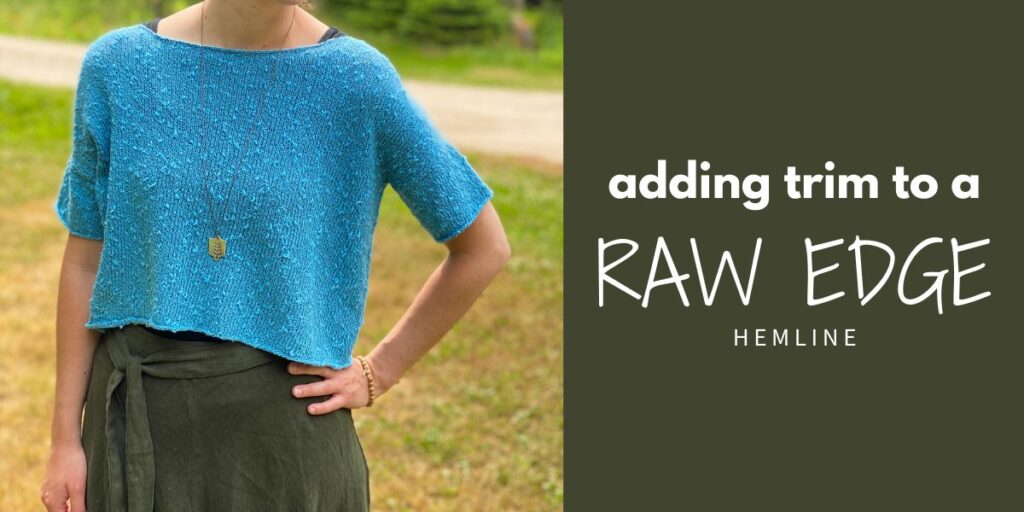
Although there’s quite a bit of snow still on the ground here in Maine (thanks to an April Nor’easter storm that just blew through!), Spring is here and so I know many of you may be looking at Spring and Summer tops to knit. And, because many warm-weather knit garments utilize linen yarn, you may encounter designs that have a “raw” hemline. This means that there is no trim at the hem (such as garter, rib or seed stitch). Here are some examples:
You see this a lot in designs utilizing linen or hemp yarn (or similar) because these types of fibers tend not to roll at the edges as dramatically as other yarns (when worked in stockinette stitch). For example, check out comparison below of 2 swatches, both with no trim added to the edges. The top swatch is Berroco Meraki, a hemp blend and the bottom swatch is Berroco Spree, a wool/cotton blend:
Why is this important to understand?
This non-rolling characteristic of linen and hemp (or similar) is important to understand should you knit a design that calls for it, has raw edges AND you plan on substituting the yarn.
How do you know if your chosen yarn will roll or not?
Swatching! The easiest way to know whether or not your chosen yarn will behave the same way as the one used in the pattern is to swatch and then block the swatch. You need to swatch anyway for gauge, so it’s no extra work. Just make sure to leave the edges raw as you swatch so you can see exactly how the edges will look post-blocked.
What to do if you choose a “rolling” yarn
If your chosen yarn rolls more than you would like, you can add a trim to it that will help it lay flat. Adding a little bit of a trim to a raw edge is easy and there are different options you can consider, depending on the design and the stitch count. The easiest option is working Garter stitch since you don’t have to worry about what multiple of stitches you have when working in garter. Typically I will work 1/2 – 1″ worth of garter when doing this. When you work Garter stitch flat, you knit every row. When you work it in the round, you work a knit round followed by a purl round (and then repeat those 2 rounds).
Another option I like is 1×1 Broken Rib. I recently made a new sample of my Castaway top (featured above and below) which has a raw edge, but in my new sample I used Stolen Stitches Nua sport yarn – a merino blend which has linen in it, but when combined with the other fibers it still rolled quite dramatically without a trim. Below are the two different versions of Castaway – the first (in blue) using a only-slightly-rolling yarn (cotton/nylon blend) and a raw hemline and the second (in green) using Nua sport and the addition of the broken rib hemline:
In this broken rib version, I only added the trim to the bottom edge – I was fine with some rolling at the sleeves and liked that look for this piece. Because Castaway is worked in the round, I just needed to make sure the cast-on amount was an even number (which it was) and then I worked the following changes:
- I cast-on with 1 needle size smaller than the needle I got gauge with
- Rnd 1: Rnd 1: [k1, p1] to end.
- Rnd 2: knit to end.
- Repeat rnds 1-2: until hem measures approx. 3″ from CO edge, ending after working a rnd 1.
- Then I switched to my body needle and worked the pattern as instructed for the Body.
If you wanted to add 1×1 broken rib to a garment that was worked flat, you can do that as well but you would need to make sure your stitch count was a multiple of 2+1.
Looking to add a trim to any of my designs?
If you plan to knit any of my designs that don’t have an edge trim but you would like one added, I’m happy to help! Just send me a message with the pattern you want to knit, what size you plan to make and what kind of trim you may prefer.

